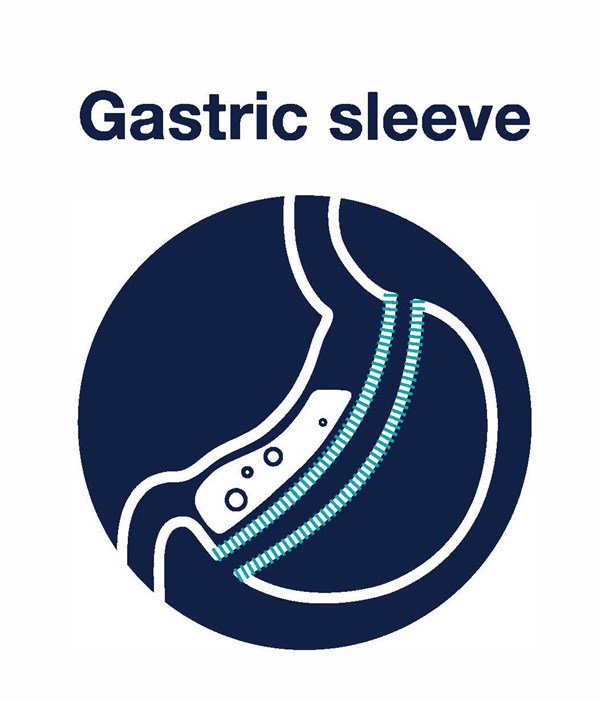Laparoscopic Sleeve Gastrectomy
In a sleeve gastrectomy, also known as a vertical sleeve gastrectomy or gastric sleeve procedure, the outer margin of the stomach is removed to restrict food intake, leaving a sleeve of stomach, roughly the size and shape of a banana, and the pylorus, the muscle that controls emptying of food from the stomach into the intestine. A sleeve gastrectomy is a purely restrictive procedure.
The sleeve gastrectomy, by reducing the size of the stomach, allows the patient to feel full after eating less and taking in fewer calories. The surgery removes that portion of the stomach that produces a hormone that can makes a patient feel hungry.
Sleeve gastrectomy is a simpler operation than the gastric bypass procedure because it does not involve rerouting of or reconnection of the intestines. The sleeve gastrectomy, unlike the Lap-band, does not require the use of a banding device to be implanted around a portion of the stomach.

Advantages
-
Weight loss generally is generally faster with the sleeve than with the gastric band.
-
Less food intolerance than with the gastric band.
-
No implantable band device
-
Surgical risk is lower than with gastric bypass while weight loss is similar.
Disadvantages
-
Sleeve gastrectomy is relatively new and has not been evaluated as much gastric banding or gastric bypass.
-
Sleeve gastrectomy is irreversible.
-
Complication risks are slightly higher than with Lap-band.





